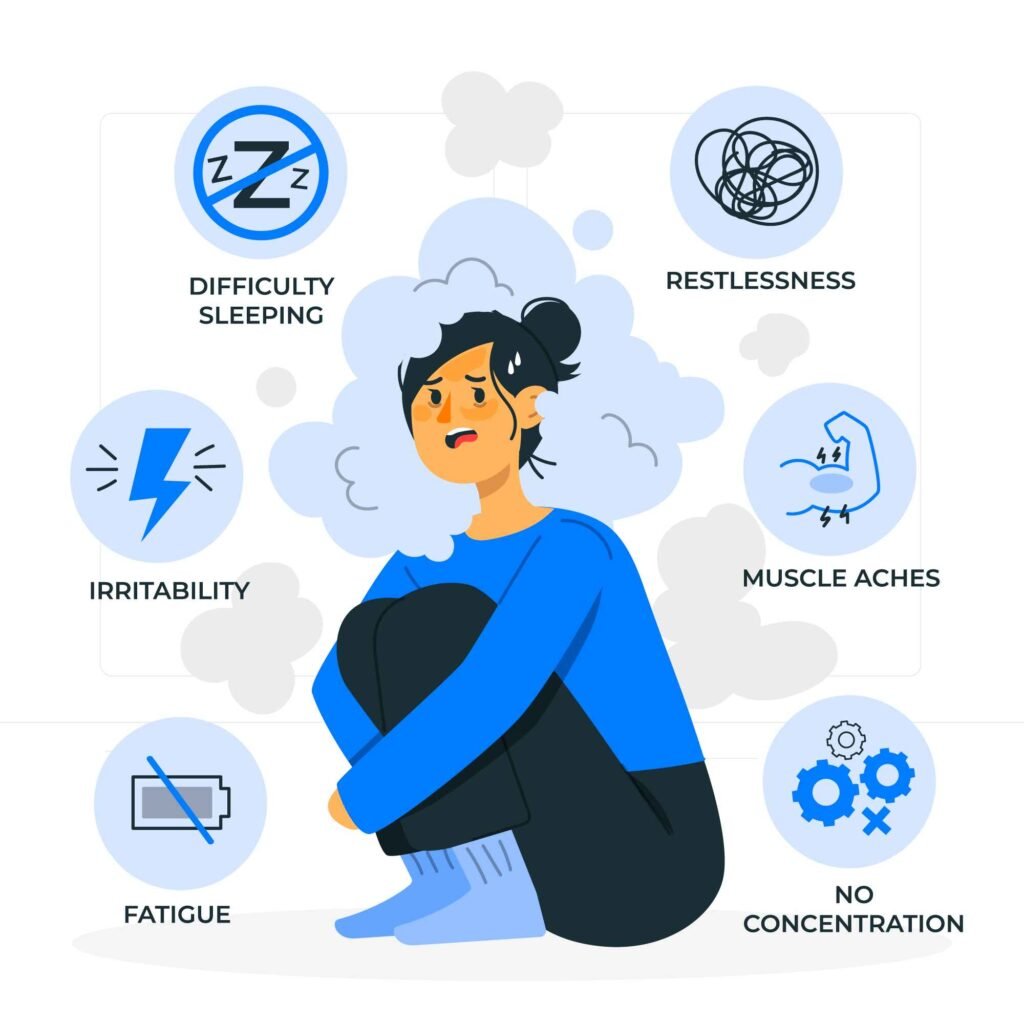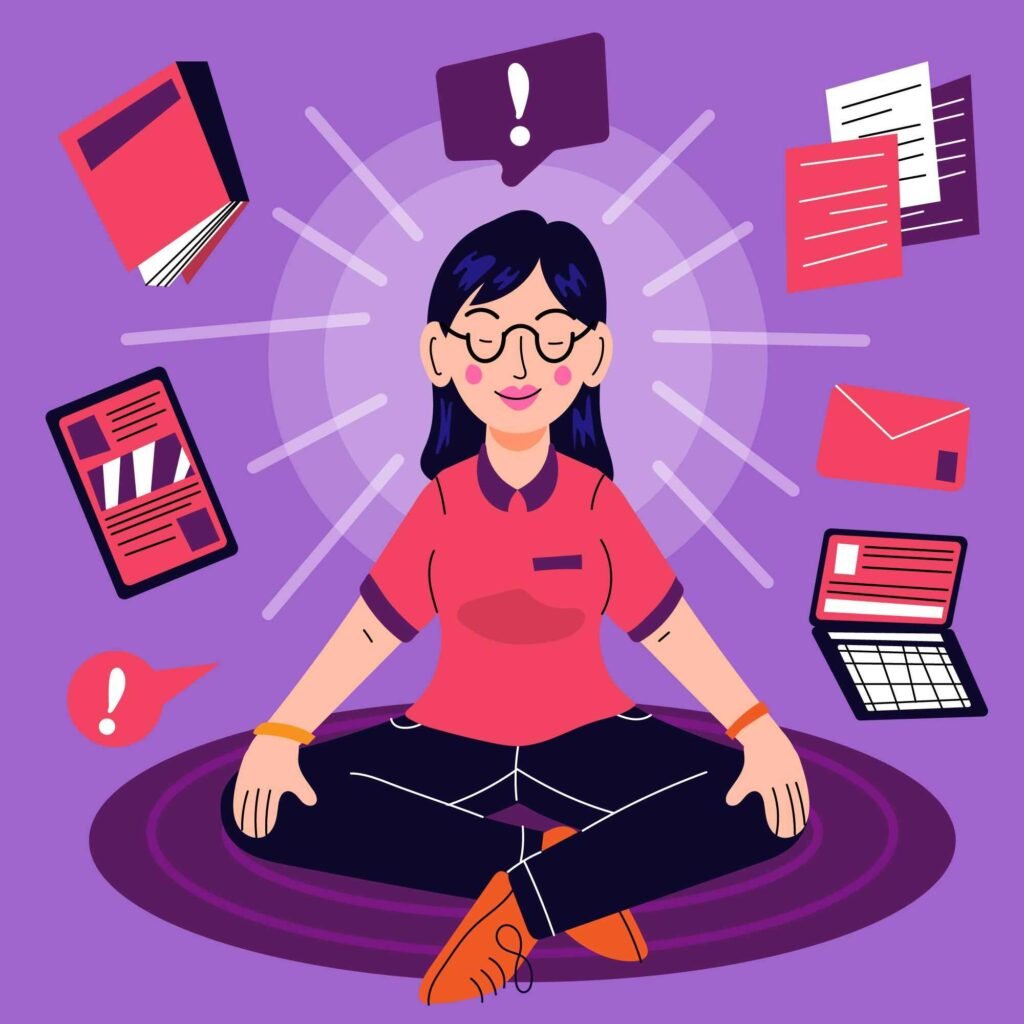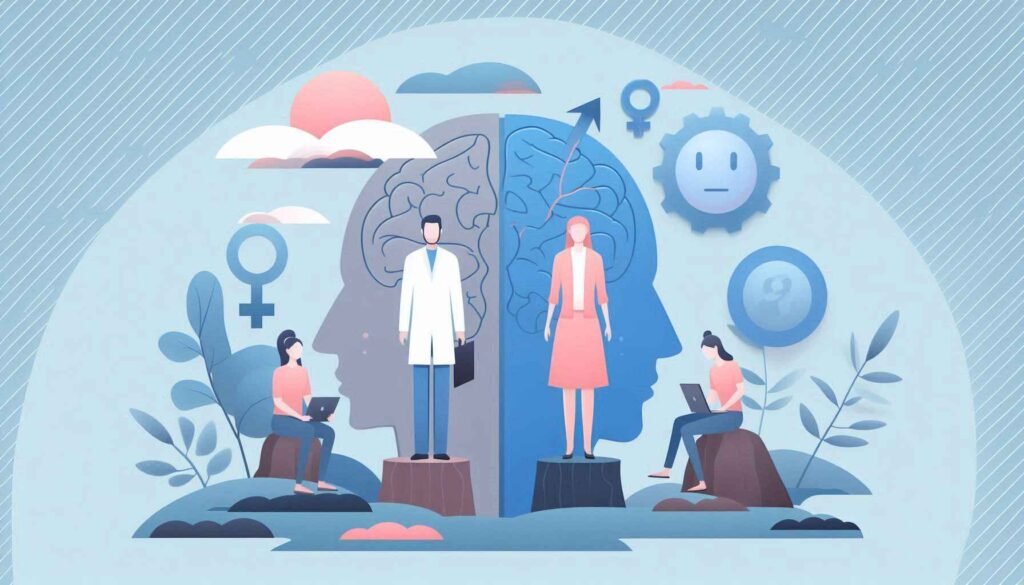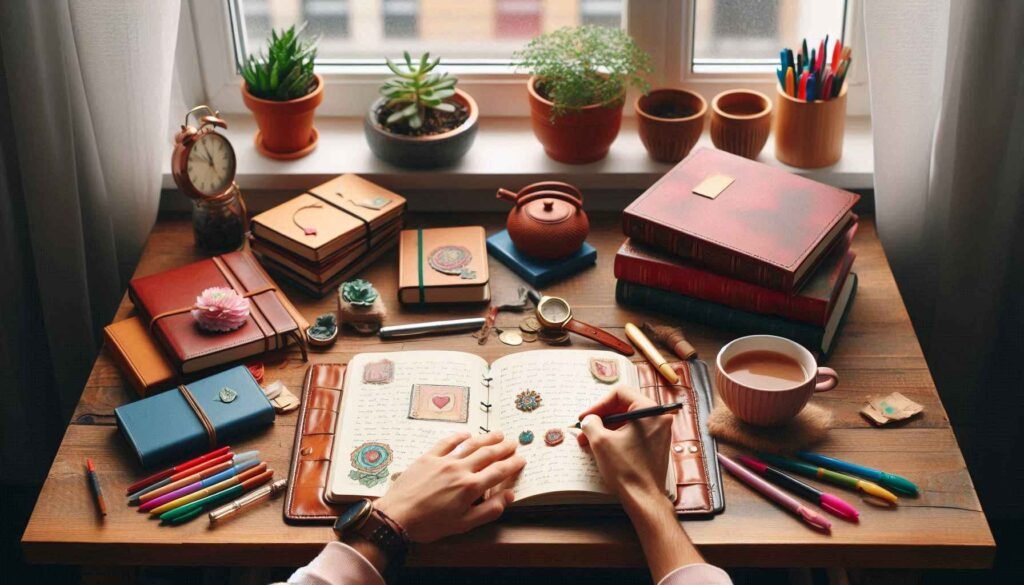
Guided Imagery Techniques for Relaxation
Guided imagery is a powerful relaxation technique that uses mental visualization to promote peace, reduce stress, and enhance overall well-being. By engaging your senses and imagination, guided imagery allows you to enter a state of deep relaxation, helping you manage anxiety, improve sleep, and boost your mood. In this guide, we’ll explore how guided imagery works, popular techniques, and practical ways to incorporate it into your daily life.
What is Guided Imagery?
Guided imagery is a form of relaxation therapy where you visualize calming images, scenarios, or stories to create a sense of peace and tranquility. It taps into your brain’s ability to connect mental imagery with physical responses. For example, picturing a serene beach with the sound of waves can lower your heart rate and release muscle tension.
This technique is often guided by an audio recording, a therapist, or even your own imagination. Guided imagery is used in various settings, including therapy, meditation, and healthcare, to help individuals manage stress and achieve mental clarity.
How Guided Imagery Works for Relaxation
Guided imagery works by engaging the mind-body connection. When you visualize peaceful or positive images, your brain responds as if those experiences are real, triggering a relaxation response. This helps:
- Reduce Cortisol Levels: Lowering the stress hormone to promote calmness.
- Slow Down Heart Rate: Helping the body shift from “fight-or-flight” to “rest-and-digest.”
- Relax Muscles: Easing physical tension caused by stress.
- Enhance Mood: Replacing negative thoughts with calming, positive imagery.
Benefits of Guided Imagery
Guided imagery offers a wide range of mental and physical health benefits. Some key advantages include:
1. Stress Reduction
By immersing yourself in calming visuals, you reduce stress and anxiety levels. The mind focuses on positive imagery instead of worries, helping to clear mental clutter.
2. Improved Sleep
Guided imagery helps calm racing thoughts, making it easier to drift into restful sleep. Visualizing peaceful scenes before bed can ease insomnia and promote better sleep quality.
3. Pain Management
Research shows that guided imagery can help manage chronic pain by shifting focus away from discomfort. Visualization can reduce the perception of pain and encourage relaxation.
4. Boosting Immune Function
Relaxation techniques, like guided imagery, reduce stress, which supports a healthier immune system. Lower stress levels mean the body can better fight off illness.
5. Enhanced Focus and Clarity
Guided imagery clears mental fog and enhances concentration. It helps ground you in the present moment, improving decision-making and productivity.
Types of Guided Imagery Techniques
1. Nature Visualization
This technique involves picturing calming natural environments like forests, beaches, or mountains. By imagining the sights, sounds, and smells of nature, you can achieve a sense of peace and escape from daily stress.
Example:
- Imagine walking through a lush forest. Feel the cool breeze, hear birds chirping, and see sunlight filtering through the trees. Your mind begins to slow, and your body relaxes.
2. Progressive Muscle Relaxation with Imagery
Combining progressive muscle relaxation (PMR) with guided imagery helps release tension in specific muscle groups while visualizing soothing images.
Example:
- As you tighten and release each muscle group, imagine tension flowing out of your body like water down a stream.
3. Safe Place Visualization
This technique helps create a mental “safe haven” where you feel secure and relaxed. It’s useful for reducing anxiety and calming panic attacks.
Example:
- Picture a cozy cabin with a warm fireplace, a soft chair, and a gentle rain pattering on the roof. This safe space provides comfort and peace.
4. Color Imagery
Color imagery involves visualizing specific colors associated with relaxation and healing. Different colors can evoke different emotional and physical responses.
Example:
- Visualize a soothing blue light washing over you, calming your mind and body, as if you’re immersed in a gentle ocean wave.
5. Journey-Based Imagery
This technique takes you on a mental “journey” through a calming scenario, such as floating on a cloud or walking through a peaceful meadow.
Example:
- Picture yourself lying on a soft, fluffy cloud, drifting peacefully through a clear blue sky. Feel the cloud gently supporting you as you let go of tension.
Step-by-Step Guide to Practicing Guided Imagery
Follow these simple steps to get started with guided imagery:
1. Find a Quiet Space
Choose a comfortable, quiet location where you won’t be interrupted. Sit or lie down in a relaxed position.
2. Close Your Eyes and Breathe
Close your eyes gently and take a few deep breaths. Inhale slowly through your nose, hold for a moment, and exhale through your mouth. Let your body relax with each breath.
3. Select Your Imagery
Choose a scene or scenario that brings you peace. This could be a beach, a meadow, or any place where you feel safe and happy.
4. Engage Your Senses
Bring your chosen imagery to life by engaging all your senses. Ask yourself:
- What do you see? (e.g., waves, trees, colors)
- What do you hear? (e.g., birds, wind, water)
- What do you feel? (e.g., warmth, breeze, sand)
- What do you smell? (e.g., flowers, salt air)
- What do you taste? (e.g., fresh air, cool water)
5. Immerse Yourself
Fully immerse yourself in the experience. If your mind wanders, gently bring your focus back to the imagery. Allow yourself to feel the relaxation and peace flowing through your body.
6. Return Gradually
After 5-10 minutes, slowly bring your awareness back to the present moment. Wiggle your fingers and toes, and when ready, open your eyes.
Advanced Guided Imagery Techniques for Deep Relaxation
Once you’re familiar with basic guided imagery, you can explore advanced techniques that deepen your relaxation and enhance mental clarity. These methods are ideal for stress management, improving mental health, and promoting overall well-being.
1. Body Scan with Visualization
This technique combines body scanning with guided imagery to achieve total body relaxation. It helps release tension from head to toe while maintaining a vivid mental image.
How to Practice:
- Get Comfortable: Lie down or sit comfortably with your eyes closed.
- Focus on Breathing: Take a few deep breaths to calm your mind.
- Visualize Relaxation Flowing: Imagine a warm, golden light starting at the top of your head and slowly moving down your body.
- Scan Each Body Part: As the light reaches each area (e.g., your forehead, shoulders, arms, legs), feel the tension melting away.
- Complete the Scan: Finish at your toes, feeling completely relaxed and grounded.
2. Healing Imagery
Healing imagery is particularly useful for managing pain, illness, or recovering from injuries. It involves visualizing the body healing itself, promoting physical and emotional well-being.
How to Practice:
- Visualize Your Ailment: Picture the area of your body that needs healing.
- Imagine a Healing Force: Visualize a soothing light, wave, or mist gently repairing the area.
- Affirm Positive Thoughts: Repeat phrases like, “My body is strong and capable of healing.”
- Feel the Transformation: Imagine the discomfort fading and your body restoring balance and health.
3. Future Visualization
Future visualization helps you achieve goals and reduce anxiety about upcoming events. It’s effective for preparing for job interviews, public speaking, or life changes.
How to Practice:
- Choose a Goal: Identify a specific event or goal you want to visualize.
- Imagine Success: Picture yourself confidently and calmly achieving the goal.
- Engage All Senses: See, hear, and feel every detail of your success. Imagine the positive emotions that come with it.
- Reinforce Positivity: Use affirmations like, “I am prepared and capable.”
4. Symbolic Imagery
This technique uses symbols to represent challenges, emotions, or goals. It’s especially helpful for processing complex feelings or situations.
How to Practice:
- Identify the Emotion or Challenge: Think about a current stressor or problem.
- Create a Symbol: Visualize this challenge as an object (e.g., a heavy rock, tangled rope).
- Transform the Symbol: Imagine the object changing into something positive, like a feather or a clear path.
- Feel the Release: As the symbol changes, feel a sense of relief and empowerment.
Tips for Maximizing the Benefits of Guided Imagery
To make guided imagery a consistent and effective part of your relaxation routine, follow these practical tips:
1. Create a Relaxation Ritual
Establish a routine for practicing guided imagery, such as before bedtime or after work. Consistency helps your brain associate imagery with relaxation.
Example Ritual:
- Dim the lights, play soft music, and sit in a comfortable chair. Spend 10-15 minutes visualizing your favorite calming scene.
2. Use Guided Imagery Recordings
Listening to pre-recorded guided imagery sessions can help you stay focused. Many apps and websites offer recordings for different goals, such as stress relief, sleep, and pain management.
3. Combine Guided Imagery with Other Relaxation Techniques
Enhance your guided imagery sessions by pairing them with:
- Deep Breathing: Helps calm the nervous system.
- Aromatherapy: Scents like lavender and chamomile enhance relaxation.
- Soft Music: Instrumental or nature sounds can deepen the experience.
4. Practice Mindfulness
Staying present during guided imagery helps maximize its benefits. If your mind wanders, gently return your focus to the imagery.
5. Keep a Journal
After each session, write about your experience. Note the imagery used, how you felt, and any insights gained. This can help track progress and identify patterns.
Common Challenges and How to Overcome Them
While guided imagery is a simple practice, some challenges may arise. Here’s how to address common obstacles:
1. Difficulty Focusing
Solution:
- Start with shorter sessions (5-10 minutes) and gradually increase the time. Use recordings to help guide your focus.
2. Racing Thoughts
Solution:
- Take a few deep breaths before starting. Remind yourself that it’s okay for thoughts to come and go. Gently return to your imagery.
3. Lack of Imagination
Solution:
- Use guided scripts or recordings. Visualize simple images, like colors or shapes, before progressing to complex scenes.
4. Feeling Restless
Solution:
- Ensure you’re physically comfortable. Try progressive muscle relaxation to release tension before starting your imagery.
Incorporating Guided Imagery into Your Daily Life
Guided imagery doesn’t have to be time-consuming. Here are simple ways to incorporate it into your day:
1. Morning Visualization
Start your day with a quick 5-minute visualization of a positive, productive day. Imagine yourself handling tasks calmly and confidently.
2. Midday Stress Break
Take a short guided imagery break during work. Close your eyes and visualize a peaceful scene to reset your mind.
3. Evening Relaxation
Wind down with a 10-15 minute guided imagery session before bed. Visualize a serene beach or forest to help ease into sleep.
The Science Behind Guided Imagery
Research shows that guided imagery affects the brain and body in powerful ways. Key findings include:
- Reduced Stress Hormones: Guided imagery lowers cortisol levels, which helps reduce anxiety and tension.
- Activated Parasympathetic Nervous System: Visualization shifts the body from a stressed state to a relaxed state.
- Improved Brain Function: Regular practice enhances focus, memory, and emotional regulation.
Practical Guided Imagery Exercises You Can Try Today
To make guided imagery an effective part of your relaxation toolkit, let’s explore a few exercises you can practice immediately. These exercises are designed to help with stress reduction, better sleep, and emotional balance.
1. The Serene Beach Visualization
This classic guided imagery exercise transports you to a peaceful beach setting to promote deep relaxation and reduce anxiety.
How to Practice:
- Find a Comfortable Position: Sit or lie down in a quiet space.
- Close Your Eyes and Breathe: Take a few slow, deep breaths to calm your mind.
- Visualize the Beach:
- Picture a warm, sunny beach.
- Feel the soft sand under your feet and the gentle breeze on your skin.
- Hear the soothing sound of waves lapping at the shore.
- Engage Your Senses:
- Smell the salty air and feel the warmth of the sun on your face.
- Imagine the cool water touching your toes as you walk along the shoreline.
- Relax Fully: Let the imagery wash away tension. Spend 10-15 minutes immersed in this scene.
- Return Gradually: Take a deep breath and slowly open your eyes.
2. The Mountain Path Exercise
Ideal for achieving a sense of calm and overcoming challenges, this exercise helps visualize strength and resilience.
How to Practice:
- Get Comfortable and Close Your Eyes.
- Visualize a Mountain Path:
- Picture yourself walking along a beautiful mountain trail.
- The path is sturdy, and each step feels steady and sure.
- Notice the Surroundings:
- See wildflowers, hear birds chirping, and feel the crisp mountain air.
- Reach the Summit:
- Imagine reaching the top of the mountain.
- Feel the triumph and strength of reaching your goal.
- Affirm Strength:
- Repeat phrases like, “I am strong, and I can overcome challenges.”
- Return Calmly: Breathe deeply and return to the present moment.
3. The Healing Garden Exercise
This guided imagery exercise is perfect for emotional and physical healing.
How to Practice:
- Close Your Eyes and Breathe Deeply.
- Visualize a Garden:
- Imagine a beautiful garden filled with vibrant flowers, trees, and a gentle breeze.
- Walk Through the Garden:
- As you walk, feel a sense of peace and healing.
- Picture the flowers and plants radiating healing energy.
- Receive Healing Energy:
- Visualize a golden light flowing from the garden into your body, healing any pain or stress.
- Feel Renewed:
- Absorb the energy and feel your body and mind becoming lighter and healthier.
- Finish with Gratitude:
- Thank the garden for its healing energy and slowly return to the present moment.
Real-Life Applications of Guided Imagery
Guided imagery can be applied in various real-world situations to improve mental and physical health. Here are some common scenarios where guided imagery makes a difference.
1. Managing Work-Related Stress
Work stress can take a toll on your well-being. Guided imagery helps you stay calm and focused during high-pressure situations.
Quick Exercise:
- Before a meeting or presentation, close your eyes for 2-3 minutes.
- Visualize a calm, confident version of yourself successfully handling the situation.
- Feel the tension dissipate and your confidence grow.
2. Enhancing Athletic Performance
Athletes use guided imagery to improve performance, reduce anxiety, and recover from injuries.
Quick Exercise:
- Before a workout or game, visualize yourself performing with strength and precision.
- Imagine every movement going smoothly and effortlessly.
- Picture the feeling of victory and achievement.
3. Coping with Chronic Pain
Guided imagery helps people with chronic pain manage discomfort by shifting focus away from pain and toward healing.
Quick Exercise:
- Visualize a warm, soothing light enveloping the area of pain.
- Imagine the pain gradually melting away, replaced by a feeling of comfort and relief.
4. Improving Sleep Quality
Guided imagery before bed helps calm racing thoughts and prepare the mind for restful sleep.
Quick Exercise:
- Picture a peaceful night sky with stars twinkling softly.
- Imagine yourself lying on a cozy cloud, drifting gently into sleep.
- Feel your body relax and your mind quieting.
Guided Imagery for Emotional Well-Being
Guided imagery can also help process difficult emotions and cultivate positive feelings.
1. Releasing Negative Emotions
If you’re holding onto anger, fear, or sadness, guided imagery can help release these feelings safely.
Exercise to Try:
- Visualize a balloon filled with your negative emotions.
- Picture yourself letting go of the balloon and watching it float away.
- Feel a sense of relief as the emotions drift further away.
2. Cultivating Gratitude
Practicing guided imagery for gratitude can improve your mood and overall outlook on life.
Exercise to Try:
- Visualize a scene representing something you’re grateful for, such as a family gathering, a cozy home, or a beautiful sunset.
- Immerse yourself in the feelings of joy and appreciation.
- Let these feelings fill your entire being.
Frequently Asked Questions About Guided Imagery
1. How Long Should a Guided Imagery Session Last?
A typical session can last between 5 and 20 minutes. Beginners may start with shorter sessions and gradually increase the duration.
2. Can Anyone Practice Guided Imagery?
Yes! Guided imagery is suitable for all ages and fitness levels. It’s a gentle technique that requires no special skills or equipment.
3. How Often Should I Practice Guided Imagery?
For the best results, practice guided imagery daily or at least 3-4 times a week. Consistency helps reinforce relaxation and stress relief.
4. Can Guided Imagery Help with Anxiety and Depression?
Absolutely. Guided imagery reduces anxiety by promoting relaxation and shifting focus away from negative thoughts. It can also improve mood and emotional balance.
Conclusion: Harness the Power of Guided Imagery
Guided imagery is a simple yet powerful tool for relaxation, stress relief, and emotional well-being. By visualizing calming scenes and positive experiences, you can unlock your mind’s potential to promote healing, reduce anxiety, and enhance overall quality of life.
Whether you’re managing daily stress, improving sleep, or seeking emotional balance, guided imagery offers a pathway to a calmer, healthier you. Start today, and let your imagination lead you to a more peaceful mind and body.



